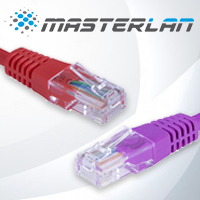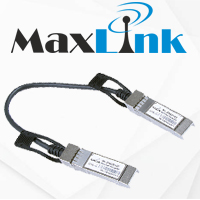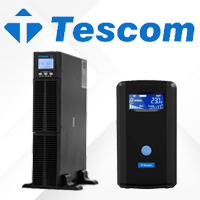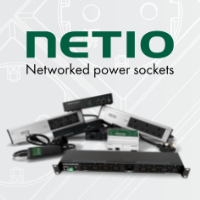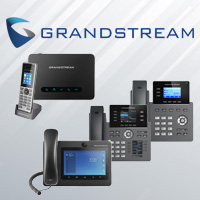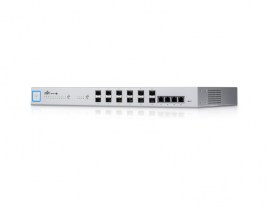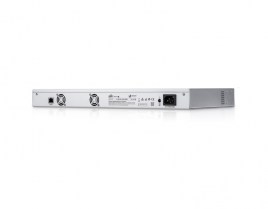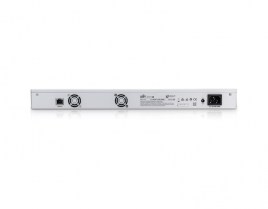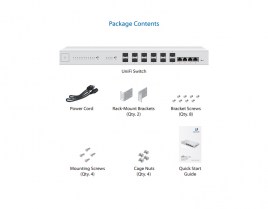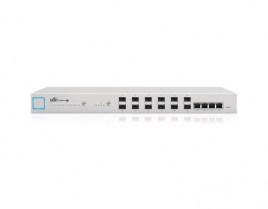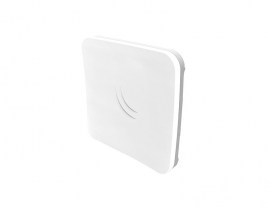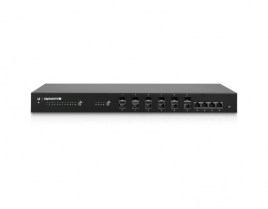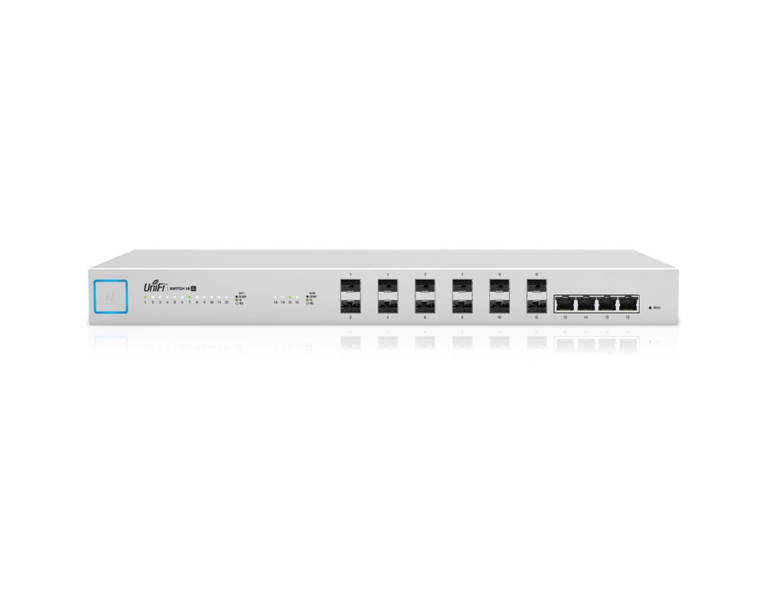
Ubiquiti US-16-XG UniFi Switch, 16-Port, 10 Gigabit, no PoE

- Περιγραφή
- Χαρακτηριστικά
- Λήψεις
- Γνώμες πελατών
| • (12) 1G/10G SFP+ Ports • (4) 1G/10G RJ45 Ports • (1) RJ45 Serial Console Port • Non-Blocking Throughput: 160 Gbps • Switching Capacity: 320 Gbps • Forwarding Rate: 238.10 Mpps • Rack Mountable with Mount Brackets (Included) • DC Input Option (Redundant or Stand-Alone) |
10G Aggregation Switch for Enterprise Networks
Build and expand your network with Ubiquiti Networks® UniFi® Switch 16 XG, part of the UniFi Enterprise System. The US‑16‑XG is a fully managed, 16-port, 10G fiber switch that enhances network capacity by providing high-bandwidth aggregation connectivity to multiple switches in your network. The US‑16‑XG offers an extensive suite of advanced Layer-2 switching features and protocols, and also provides Layer-3 routing capability.
Switching Performance
The US‑16‑XG offers the forwarding capacity to simultaneously process traffic on all ports at line rate without any packet loss. The total non-blocking throughput is up to 160 Gbps.
10G High-Capacity Links
The US‑16‑XG offers maximum performance and low latency as an aggregation switch. For fiber connectivity, it features 12 SFP+ ports. For copper connectivity, the US‑16‑XG offers four RJ45 ports that support 10GBASE-T, the standard for 10 Gbps connections using Cat6 (or higher) cabling and RJ45 connectors.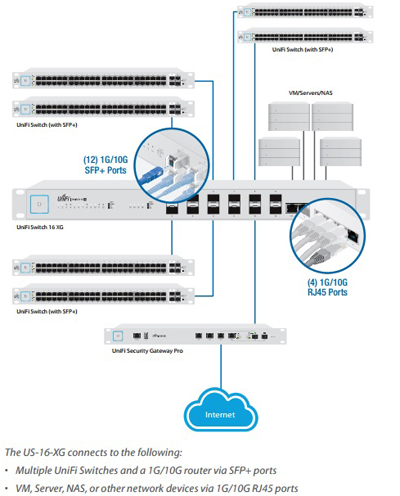
UniFi Controller
Designed for convenient management, the UniFi Controller software allows admins to configure and monitor the UniFi Switch and other UniFi devices using a graphical user interface. You can download it from www.ubnt.com at no cost.
Multi-Site Management
A single instance of the UniFi Controller running in the cloud can manage multiple UniFi sites within a centralized interface. Each site is logically separated and has its own network monitoring, configuration, maps, statistics, and admin accounts.
Switch Configuration
You can access any managed UniFi Switch through the UniFi Controller to configure a variety of features:
• Operation mode (switching, mirroring, or aggregate) per port
• Network/VLAN configuration
• Jumbo frame and flow control services
• Network settings
• Storm control setting per port
• Spanning tree configuration
• 802.1x control and RADIUS VLAN
• Debug terminal option for command-line interface
Switch Port Status
You can also view status information for each port:
• Connection speed and duplex mode
• TX/RX data rates
• Network/VLAN setting
| Εγγυήσεις - Επιστροφές: | |
| Επιστροφή Χρημάτων: | Επισκευή - Αντικατάσταση: |
| 20 ημέρες | 24 μήνες |
| Specifications | |
| Dimensions | 443 x 221 x 43 mm |
| Weight | Without Mount Brackets: 2.62 kg With Mount Brackets: 2.71 kg |
| Enclosure Characteristics | SGCC Steel |
| Total Non-Blocking Throughput | 160 Gbps |
| Switching Capacity | 320 Gbps |
| Forwarding Rate | 238.10 Mpps |
| Max. DC Power Consumption | 36W (Excludes SFP/SFP+ Modules) |
| Power Method | AC: 100-240VAC/50-60 Hz, Universal Input DC: DC 56W, 25 to 16V, with 2.5 mm DC Power Inline Connector |
| Supported Voltage Range | 100 to 240VAC 25 to 16VDC |
| Power Supply | AC/DC, Internal, 56W DC |
| LEDs Per Data Port | Speed/Link/Activity |
| Networking Interfaces | (12) 1/10 Gbps SFP+ Ethernet Ports (4) 1/10 Gbps RJ45 Ethernet Ports |
| Management Interface | (1) RJ45 Serial Port Out-of-Band, Ethernet Ports In-Band |
| Certifications | CE, FCC, IC |
| Rack Mount | Yes, 1U High |
| ESD/EMP Protection | Air: ± 24 kV, Contact: ± 24 kV |
| Operating Temperature | -5 to 40° C (23 to 104° F) |
| Operating Humidity | 5 to 95% Noncondensing |
| Shock and Vibration | ETSI300-019-1.4 Standard |
| Software Information | |
| Core Switching Features | • ANSI/TIA-1057: LLDP-Media Endpoint Discovery (MED) • IEEE 802.1AB: Link Layer Discovery Protocol (LLDP) • IEEE 802.1D: Spanning Tree Compatibility • IEEE 802.1S: Multiple Spanning Tree Compatibility • IEEE 802.1W: Rapid Spanning Tree Compatibility • IEEE 802.1Q: Virtual LANs with Port-Based VLANs • IEEE 802.1p: Ethernet Priority with User Provisioning and Mapping • IEEE 802.1X: Port-Based Authentication with Guest VLAN Support • IEEE 802.3: 10BASE-T • IEEE 802.3u: 100BASE-T • IEEE 802.3ab: 1000BASE-T • IEEE 802.3an-2006: 10GBASE-T • IEEE 802.1ak: Virtual Bridged Local Area Networks - Amendment 07: Multiple Registration Protocol • IEEE 802.3ac: VLAN Tagging • IEEE 802.3ad: Link Aggregation • IEEE 802.3x: Flow Control • IEEE 802.1D-2004: Generic Attribute Registration Protocol: Clause 12 (GARP) • IEEE 802.1D-2004: Dynamic L2 multicast registration: Clause 10 (GMRP) • IEEE 802.1Q-2003: Dynamic VLAN registration: Clause 11.2 (GVRP) • RFC 4541: Considerations for Internet Group Management Protocol (IGMP) Snooping Switches • RFC 5171: Unidirectional Link Detection (UDLD) Protocol |
| Advanced Layer 2 Features | • Broadcast Storm Recovery • Broadcast/Multicast/Unknown Unicast Storm Recovery • DHCP Snooping • IGMP Snooping Querier • Independent VLAN Learning (IVL) Support • Jumbo Ethernet Frame Support • Port MAC Locking • Port Mirroring • Protected Ports • Static MAC Filtering • TACACS+ • Voice VLANs • Unauthenticated VLAN • Internal 802.1X Authentication Server |
| Platform Specifications | • DHCP Server • Maximum Number of Pools: 128 • Maximum Number of Leases (Total): 2048 • Routing • Number of Routes: 16 • Number of Routing Interfaces: 15 • VLANs: 255 • MAC Addresses: 8k • MSTP Instances: 4 • LAGs: 6 • ACLs: 100 with 10 Rules per Port • Traffic Classes (Queues): 8 |
| System Facilities | • Event and Error Logging Facility • Run-Time and Configuration Download Capability • PING Utility • FTP/TFTP Transfers via IPv4/IPv6 • Malicious Code Detection • BootP and DHCP • RFC 2021: Remote Network Monitoring Management Information Base Version 2 • RFC 2030: Simple Network Time Protocol (SNTP) • RFC 2819: Remote Network Monitoring Management Information Base • RFC 2865: RADIUS Client • RFC 2866: RADIUS Accounting • RFC 2868: RADIUS Attributes for Tunnel Protocol Support • RFC 2869: RADIUS Extensions • RFC 3579: RADIUS Support for EAP • RFC 3580: IEEE 802.1X RADIUS Usage Guidelines • RFC 3164: BSD Syslog Protocol |
| Management | • Web UI • Industry-Standard CLI • IPv6 Management • Password Management • Autoinstall Support for Firmware Images and Configuration Files • SNMP v1, v2, and v3 • SSH 1.5 and 2.0 • SSL 3.0 and TLS 1.0 • Secure Copy (SCP) • Telnet (Multi-Session Support) |
| Layer 3 Routing | • Static Routing • Policy Based Routing |
| QoS | • Access Control Lists (ACLs), Permit/Deny Actions for Inbound IP and Layer 2 Traffic Classification Based on: • Time-Based ACL • Source/Destination IP Address • TCP/UDP Source/Destination Port • IP Protocol Type • Type of Service (ToS) or Differentiated Services (DSCP) Field • Source/Destination MAC Address • EtherType • IEEE 802.1p User Priority • VLAN ID • RFC 1858: Security Considerations for IP Fragment Filtering • Optional ACL Rule Attributes • Assign Flow to a Specific Class of Service (CoS) Queue • Redirect Matching Traffic Flows • Differentiated Services (DiffServ) • Classify Traffic Based on Same Criteria as ACLs • Mark the IP DSCP or Precedence Header Fields, Optional • Police the Flow to a Specific Rate with Two-Color Aware Support • RFC 2474: Definition of the Differentiated Services Field (DS field) in the IPv4 and IPv6 Headers • RFC 2475: An Architecture for Differentiated Services • RFC 2597: Assured Forwarding Per-Hop Behavior (PHB) Group • RFC 3246: An Expedited Forwarding PHB • RFC 3260: New Terminology and Clarifications for DiffServ • Class of Service (CoS) Queue Mapping Configuration • AutoVoIP: Automatic CoS Settings for VoIP • IP DSCP-to-Queue Mapping • Configurable Interface Trust Mode (IEEE 802.1p, DSCP, or Untrusted) • Interface Egress Shaping Rate • Strict Priority versus Weighted Scheduling per Queue |
ΕΙΔΑΤΕ ΠΡΟΣΦΑΤΑ
















